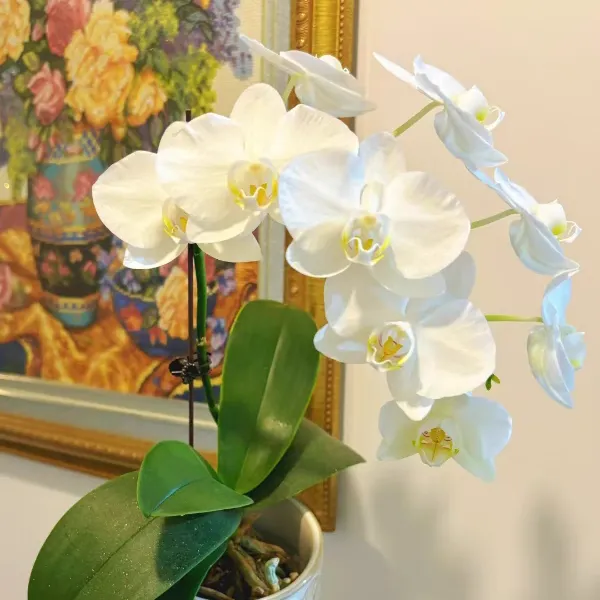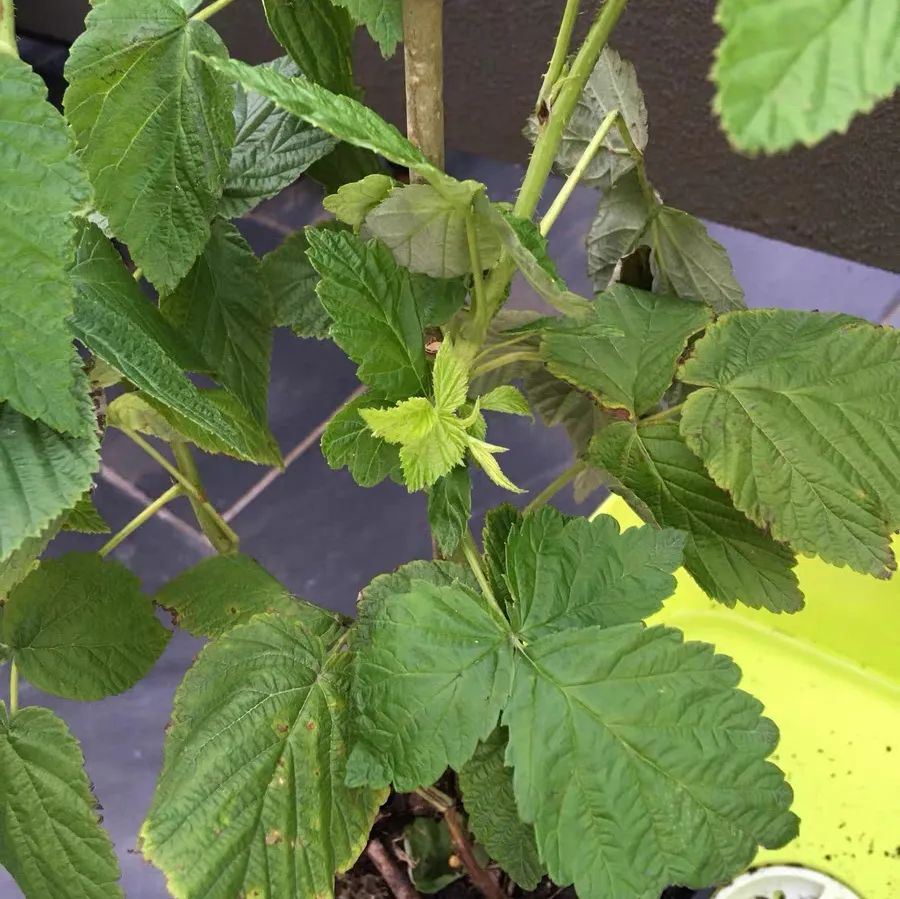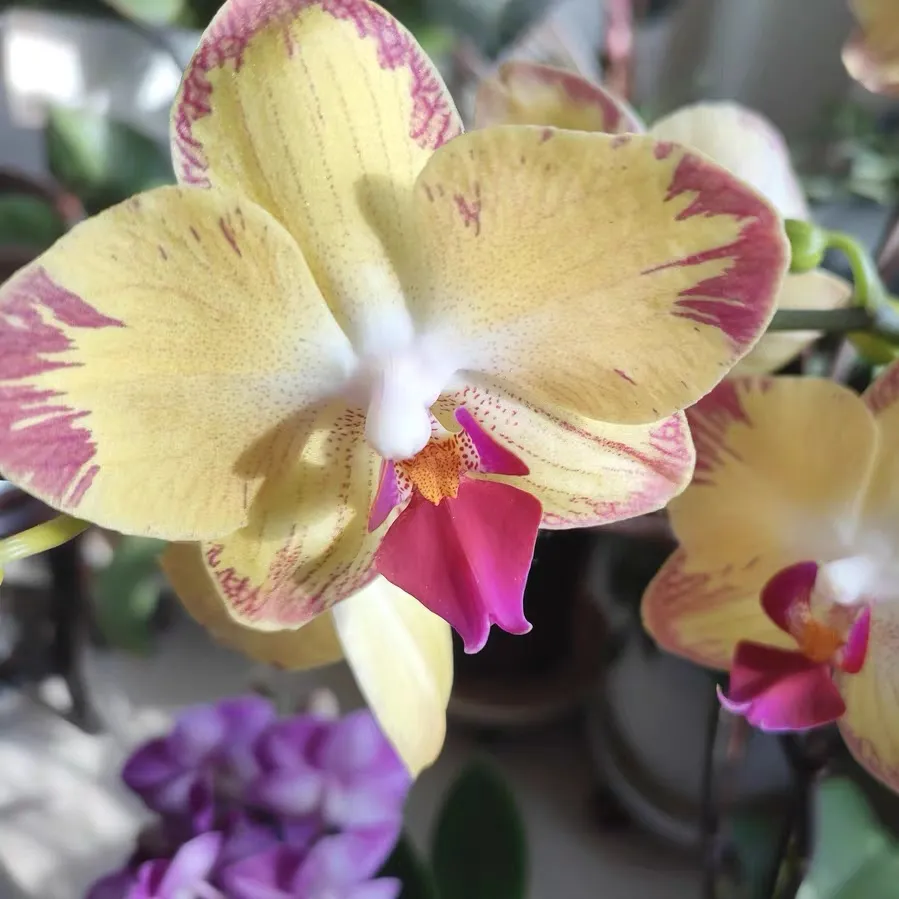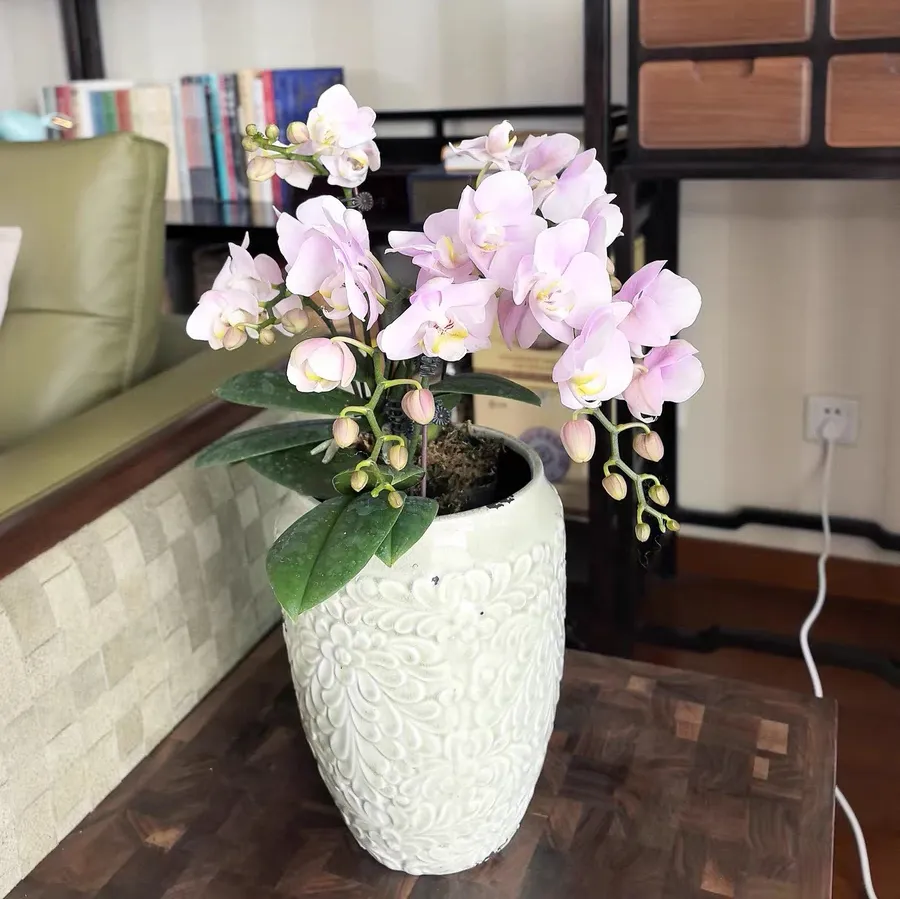Recently, the temperature has fluctuated sharply, and the temperature difference between day and night has significantly increased. This is the golden season for inducing the flower stalks of Phalaenopsis orchids! Mastering the correct method of inducing flower stalks can make the Phalaenopsis orchids send out tall and straight flower spikes and bloom beautiful flowers.
**I. Watering**
During the period of inducing flower stalks, Phalaenopsis orchids should neither be short of water nor be overwatered. Judge the timing of watering by observing the state of the roots - water when the roots turn from emerald green to white and the surface is slightly dry. Adopt the principle of thorough watering, watering until water comes out from the bottom of the pot, and then water again after the surface of the planting medium is dry. Water the sphagnum moss planting medium once every 5 - 7 days, and water the bark planting medium once every 3 - 5 days.
**II. Fertilization**
Phosphorus and potassium fertilizers can effectively promote flower bud differentiation. Commonly used is potassium dihydrogen phosphate, which is diluted into a 0.1% - 0.2% solution and sprayed on the leaves or watered at the roots once every 7 - 10 days. Note that fertilization varies according to different growth stages: during the vegetative growth period, focus on nitrogen fertilizers; during the period of inducing flower stalks, focus on phosphorus and potassium fertilizers to avoid excessive nitrogen fertilizers causing the plants to grow excessively. In addition, fertilization should follow the principle of "applying thin fertilizers frequently". Excessive fertilization will lead to soil salinization and burn the roots of the plants, which is not worth the loss.
**III. Temperature Difference**
Keep the temperature at 25 - 30°C during the day, which is conducive to photosynthesis; lower it to 18 - 20°C at night to reduce nutrient consumption and stimulate flower bud differentiation. Maintaining a temperature difference of 8 - 10°C continuously for 2 - 3 weeks can significantly increase the rate of flower stalk emergence. You can control the temperature with the help of opening windows, fans or air conditioners. For example, place the Phalaenopsis orchids in a well-ventilated and sunny indoor location during the day to increase the temperature using natural light; if the temperature is too high at night, you can open the windows for ventilation and cooling, or use a fan to assist air circulation. If necessary, you can also use an air conditioner to precisely control the temperature.
**IV. Plant Conditions**
Check the roots before inducing flower stalks, cut off the rotten and black parts, and repot them after disinfection. It is recommended to select mature plants with more than 5 healthy and broad leaves. With sufficient nutrient reserves, the success rate of inducing flower stalks is higher.
**V. Light**
Shade with a sunshade net from 11 a.m. to 3 p.m. (with a shading rate of 30% - 50%) to avoid leaf scorching. Let the plants receive direct sunlight fully during other periods, ensuring 6 - 8 hours of light per day. Regularly rotate the flower pot to ensure uniform light reception, which promotes flower bud development. At the same time, regularly rotate the flower pot to make all parts of the plant receive light evenly and avoid the plant growing obliquely due to uneven light.
In addition, during the process of inducing flower stalks, it is also necessary to keep the environment well-ventilated. After the flower stalks emerge, moderately increase the humidity to 60% - 80%, which is helpful for the rapid growth of flower spikes and the blooming of flowers.
How to induce the flower stalks of Phalaenopsis orchids to bloom

Share with
Tagged in :




Leave a Reply